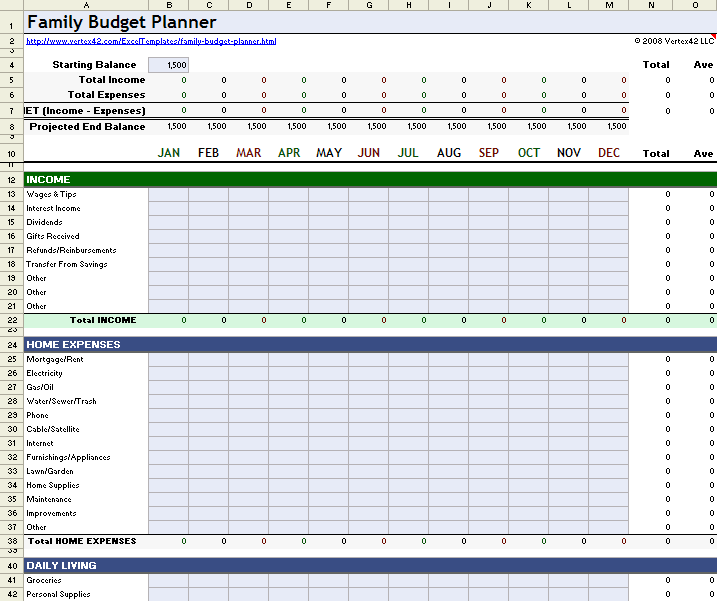How To Make A Budget : An Essential Step of Financial Planning
 When planning your personal finance it is always good to start from the beginning. Even if you already find yourself in a mess of bills and expenses, it is better to put that aside and start the financial planning process with the right foundation. This foundation is built with a budget. A budget is a planned document that organizes your incoming cash flows with your outgoing expenses. It is a “snap shot” document, which means it covers a period of time, instead of an ongoing document. A budget can be set up on a daily, weekly, monthly or annual basis. However, it is usually based on monthly or annual time period.
When planning your personal finance it is always good to start from the beginning. Even if you already find yourself in a mess of bills and expenses, it is better to put that aside and start the financial planning process with the right foundation. This foundation is built with a budget. A budget is a planned document that organizes your incoming cash flows with your outgoing expenses. It is a “snap shot” document, which means it covers a period of time, instead of an ongoing document. A budget can be set up on a daily, weekly, monthly or annual basis. However, it is usually based on monthly or annual time period.
Like I said, a budget is a document that measures your incoming cash with your outgoing expenses. These are usually referred to as Assets and Liabilities. Assets are pretty much things that you own. Cash, possessions, jewelry, etc. Liabilities are things you owe. These can be considered as bills, mortgages, expenses, and others. The point of a budget is to make sure you have more on the Asset side than on the liability side. In turn, by having more assets you should technically have more money coming in than going out in that time period which is being measured. By forming a budget, you build a foundation of what to expect from month to month. This is essential to know, as you move forward in personal financial planning to more advance concepts. Without a budget, you have no plan of execution or building block to help you increase our gain.
Budgets are planning documents. They look forward. They do not reflect back. So the numbers produced in a budget are “projected numbers.” Your actual numbers may vary from the ones you projected in your budget, but it should be close to what you are actually spending. Below is just one example of a format of a budget. There are many ways to develop one, and you need not to follow the below format. As long as you are measuring your inflows vs your outflows, you have begun a budget.

The above budget is based on a monthly period. On the top half, you see that the person is measuring their income (ie wages, gifts, dividends). On the bottom half, they are measuring their income expenses (ie electricity, gas, phone). At the top it shows the formula of Income-Income expense=Net Income. Your goal in setting up the budget is to hopefully make the Net Income number positive month to month.
It is important to review your budget after the measuring period is over. If you find that the first month or two, your net income is negative, don’t worry. Take another look at your budget and compare it to your actual spending. See where you are off on your numbers and adjust. Sometimes it can take a few months to get your budget positive. It is very important to constantly review and revise your budget as your income and outflows will frequently change.
Developing a budget is an essential part of financial planning. By reviewing your budget, you are able to see your strengths and weaknesses of cash spending. Maybe you are great with not buying too many clothes, however you eat out too much. Or maybe you go to the movies too much, but you are great at saving gas. Either way, you are able to evaluate your cash spending and make adjustments to better your monthly savings. The ultimate goal of financial planning is to have as much savings a month as possible. If you have not developed a budget, do so. You will quickly find how beneficial this document is.




















おしゃれ 腕時計 メンズ
blogowpis.pl
Setting Up a Budget | Planning Financials | Personal Finance To Help Make You Rich
more resources
Setting Up a Budget | Planning Financials | Personal Finance To Help Make You Rich
vangogh.snu.ac.kr
Setting Up a Budget | Planning Financials | Personal Finance To Help Make You Rich